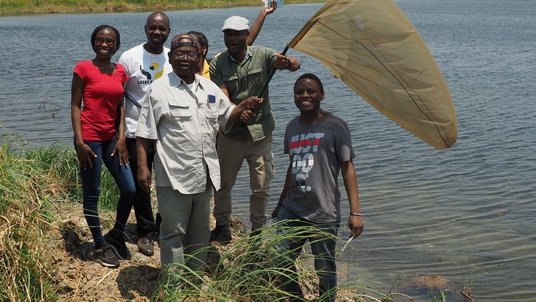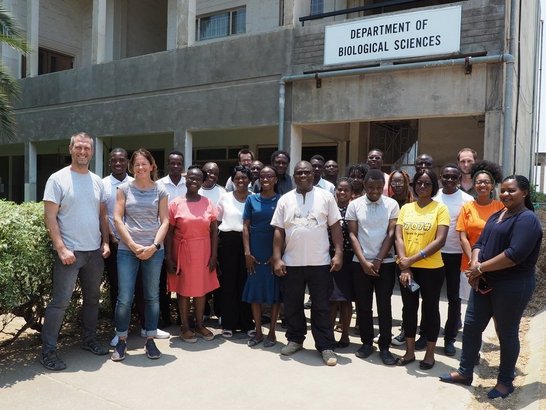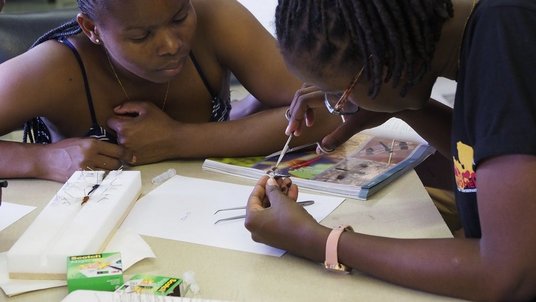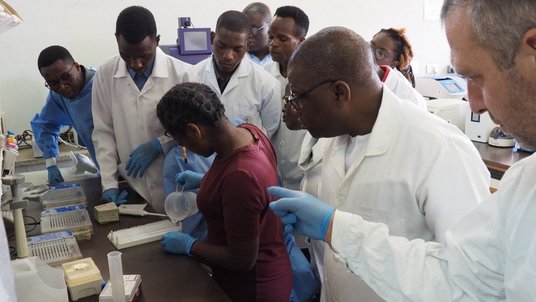
Inventorying biodiversity in the tropics: Establishing a DNA-barcoding pipeline for characterizing and monitoring Zambia's biodiversity

Cooperating countries: Zambia and Austria
Coordinating institution: University of Graz
Partner institutions: University of Zambia, Natural History Museum Vienna
Project duration: 1 September 2021 - 31 August 2024
Budget: € 45.850,00
Project summary
The world is currently facing an unprecedented loss of biodiversity. As highlighted in the latest IPBES (Intergovernmental Platform on Biodiversity and Ecosystem Services) global assessment report on biodiversity and ecosystem services, about 1 million animal and plant species are currently threatened with extinction (IPBES, 2019). In addition, the average abundance of many native species has been declining rapidly over the last few decades. Five main causes for this dramatic loss of biodiversity have been put forward: i) changes in land and sea use, ii) direct exploitation of organisms, iii) climate change, iv) pollution) and v) invasive alien species. While the data and projections published in the IPBES report are highly alarming, one needs to keep in mind that there is still no consensus on how many species exist on Earth, with estimates ranging from approximately 0.5 to >100 million (Kassas 2002; Caley et al. 2014) and that many regions, especially in the “Global South” are notoriously understudied, especially with regard to less charismatic taxa. This is particularly true for Zambia, for which the general distribution and genetic characterization of plant and animal species have not yet been comprehensively examined (a noteworthy exception, however, are the cichlid fishes of Lake Tanganyika; e.g., Breman et al. 2016; Ronco et al. 2020). Yet, many of these species have potential to support and secure human-livelihoods in the country directly as food source, source of medical agents and raw material for clothing and building material, or indirectly via ecosystem services like clean water and air or climate regulation (e.g. Sandifer et al. 2015).
Biodiversity, however, is not something static, but rather dynamic and sensitive to changing environmental conditions. For documenting, maintaining and monitoring changes in biodiversity and its numerous functions it is necessary to be able to identify which entities contribute to biodiversity. For many taxa a reliable species identification, the prerequisite for studying biodiversity, is only possible by taxonomic experts, whose numbers have been drastically declining over the last few decades (= taxonomic impediment; a problem well known in the scientific community but for a long time ignored by national research strategies and funding organizations). In light of these developments and the urgent need to efficiently and rapidly measure biodiversity, reliable alternative methods are needed that can be applied even by taxonomic laymen. DNA barcoding is a method for identifying specimens (ideally to species level) employing an expert based reference system (open access database) that drastically increases the number of people able to identify organisms down to species level and reduces the rate of misidentifications among morphologically similar taxa. It is important to note that in many cases even experts can reliably identify organisms only in the adult stage. In many cases only one of the two sexes can be identified with certainty. DNA barcoding solves these issues by offering the opportunity to determine difficult-to-identify species as well as to assign eggs, larvae and tissue remains or even traces (e.g., blood) to a specific species. This method thus complements classical biological taxonomy by helping to identify species for numerous applications including research, nature conservation, the legal and the economic sector (for some examples see Fig. 1). For this reason, in many countries DNA barcoding initiatives have been established that have one common vision: providing a data infrastructure (reference data) that serves as anchor for all aspects of biodiversity based basic and applied research. Furthermore, DNA barcoding contributes to the discovery of many new species and also provides first insights into the true diversity of poorly known/studied taxa.
Contribution to Sustainable Development
As has been clarified, “Sustainable Development Goal 3 of the 2030 Agenda for Sustainable Development is to “ensure healthy lives and promoting well-being for all at all ages”. The associated targets aim to reduce the global maternal mortality ratio; end preventable deaths of newborns and children; end the epidemics of AIDS, tuberculosis, malaria and other communicable diseases; reduce mortality from non-communicable diseases; strengthen the prevention and treatment of substance abuse; halve the number of deaths and injuries from road traffic accidents; ensure universal access to sexual and reproductive health-care services; achieve universal health coverage; and reduce the number of deaths and illnesses from hazardous chemicals and pollution.” - quoted from the health and population topic.
Since its appearance, HFMD has put an extreme burden on social healthcare especially in Western Pacific Region, where it returns every year with unpredictable consequences. Preventing its spread is considered unreachable as HFMD utilizes directly transmitted ways. Vaccination is a promising method which is on its phase 3 trial now in China. However, the common causes of HFMD are enteroviruses, raising an alternative prevention based on oral route using probiotics as drugs’ carriers to block virus entry. In other hand, adding probiotics helps strengthen the gut microbiota as well, which is known to play an important role not only in children’s development but also in other aspects of healthcare. This project aims to prevent disease progression, also the spread of infection to others during epidemics, which helps reduce either the number of infected children or economic losses for healthcare system. In terms of society, the ability to prevent outbreaks, reduce the number of deaths due to HFMD will have positive effects on social safeness as well as help uphold the Sustainable Development Goal for reducing child and infant mortality through active healthcare and preventive measures. An important factor could be expanded during this project is the collaboration between the two universities of Europe and South East Asia.



